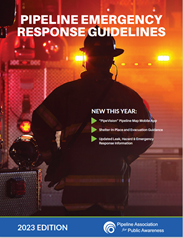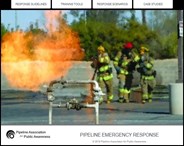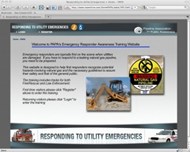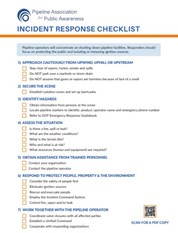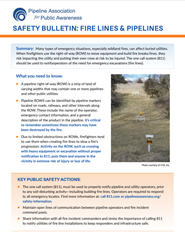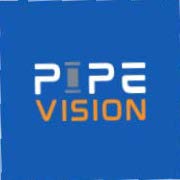Pipeline Emergency Response Guidelines
Knowing how to respond to a pipeline incident and being prepared to work together with the pipeline representative is critical. The Pipeline Emergency Response Guidelines were created to provide a concise, yet complete, resource for reference prior to and during a pipeline emergency.
Pipeline Emergency Response Training Tools and Scenarios
Access a library of training tools and interactive scenarios to apply your knowledge and solve problems. These training materials include: interactive training scenarios for various pipeline emergency situations, a downloadable presentation based on the Pipeline Emergency Response Guidelines booklet, instructors guide, and practice test.
Responding to Utility Emergencies -
Online Course
Emergency responders are typically first on the scene when utilities are damaged. This web site is designed to help first responders recognize potential hazards involving natural gas and the necessary guidelines to assure their safety and that of the general public. Training involves tracks for both Fire/Rescue and Law Enforcement.
Pipeline Incident Response Checklist
The Incident Response Checklist provides a step-by-step protocol for safe and effective pipeline response, working in coordination with pipeline operators.
Safety Bulletin:
Fire Lines and Pipelines
This safety bulletin provides real-life, practical information for emergency responders when constructing fire lines or operating heavy equipment over pipelines.
Guidance Document:
Shelter-In-Place or Evacuate?
A one-page guidance document providing considerations on when to shelter-in-place and when to evacuate during pipeline emergencies. Click here for a detailed decision guide funded by a US Department of Transportation Pipeline and Hazardous Materials Safety Administration Technical Assistance Grant.
NASFM's Pipeline Safety Programs

The National Association of State Fire Marshal’s (NASFM) offers a comprehensive, integrated emergency response training program designed to teach emergency responders and pipeline industry personnel to safely respond, and effectively manage, pipeline incidents. The training program, called Pipeline Emergencies, is intended to produce significant safety results in terms of industry, public safety and improved emergency response tactics. Learn more about Pipeline Emergencies. Learn more about the National Association of State Fire Marshal’s Safe Energy and Transportation program.
Fire Department Pipeline Response, Emergency Planning, and Preparedness Toolkit

The National Volunteer Fire Council (NVFC) and the Pipeline & Hazardous Materials Safety Administration (PHMSA) partnered to develop the Fire Department Pipeline Response Emergency Planning & Preparedness (FD PREPP) Toolkit. This FREE resource is designed to help departments conduct pre-incident planning, increase preparedness, and improve response to pipeline incidents. It was developed with assistance from industry stakeholders and responders.
NENA Pipeline Emergency Operations Standard/Model Recommendation Document 56-007

This Standard is intended to aid Public Safety Answering Points (PSAP) in the development and implementation of emergency communication protocols pertaining to emergencies involving pipelines carrying non-toxic natural gas and hazardous liquid petroleum products. The focus of this standard is on the first minute of the call intake process.
NFPA 329: Recommended Practice for Handling Releases of Flammable and Combustible Liquids and Gases
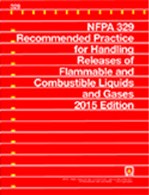
This recommended practice details the appropriate methods for responding to fire, explosion, and human health hazards resulting from the release of a flammable, combustible, or otherwise hazardous liquid, gas, or vapor that may migrate to a subsurface structure.
Hazard Mitigation Planning: Practices for Land Use Planning and Development Near Pipelines
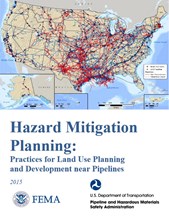
PHMSA and FEMA released Hazard Mitigation Planning: Practices for Land Use Planning and Development near Pipelines. This guidance document outlines best practices for communities to reduce risks from pipeline incidents, including those caused by natural hazards. It was prepared by PHMSA’s Pipelines and Informed Planning Alliance (PIPA) Communications Team and is sponsored by PHMSA in coordination with FEMA as a primer for incorporating pipeline hazards into hazard mitigation plans.
Guide for Communicating Emergency Response Information for Natural Gas and Hazardous Liquids Pipelines
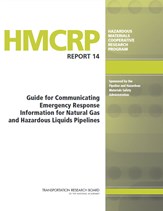
The Transportation Research Board’s Hazardous Materials Cooperative Research Program (HMCRP) recently released Report 14: Guide for Communicating Emergency Response Information for Natural Gas and Hazardous Liquids Pipelines. This report provides guidance on responding to a pipeline emergency.
PipeVision provides emergency response agencies detailed information about pipelines in their jurisdiction including an initial evacuation distance from the line during and emergency. The application also includes a mechanism for agencies to collaborate with pipeline operators by submitting information regarding populated areas (identified sites) near these pipelines.
National Pipeline Mapping System
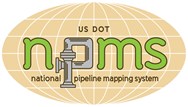
Access transmission pipeline maps and emergency contact information and download maps to include in your mapping programs. This tool is provided and maintained by the Department of Transportation. View a tutorial created by Paradigm with information about how to use NPMS.
Evacuation Distance Guidelines for Natural Gas
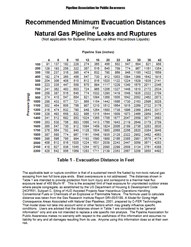
This document provides information on the recommended evacuation distances for natural gas pipeline leaks and ruptures.
Pipeline and Informed Planning Alliance (PIPA)
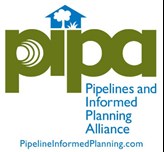
PIPA is an initiative of pipeline safety stakeholders, supported by the Pipeline & Hazardous Material Administration (PHMSA), to identify and recommend practices related to risk-informed planning for development around transmission pipelines.
PHMSA's Emergency Response Guidebook
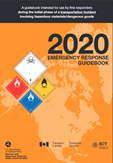
The Emergency Response Guidebook (ERG), published by the Pipeline and Hazardous Materials Safety Administration (PHMSA), includes response tips and product-specific reference information and is designed for emergency responders who may be the first to arrive at a scene involving a hazardous material. In addition to the printed and .pdf versions, mobile versions are also available for Blackberry and iPhone users.

This project examined how prepared the City and County of Denver Mayor’s Office of Emergency Management and Homeland Security [OEMHS] is in the event of a pipeline incident, and produced several tools to aid preparedness efforts. A PDF copy of the final report is available at the link above. This file does not contain the Hazard Annex.
Emergency Response Decision Support System 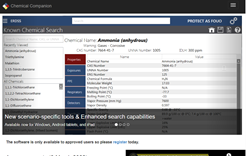
ERDSS provides first responders with decision support for hazardous environments contaminated with chemical agents. This software tool, which operates on Windows, Android, and iOS, is provided free-of-charge to the military, law enforcement, and fire departments.
Guidance for Responding to a CO2 Pipeline Incident
API developed this free guide is intended to improve response effectiveness by providing the latest data on dispersion modeling practices, plume predictions, response actions, isolation strategies and hazards. It also outlines information operators should provide to first responders during notification of a CO2 pipeline incident.

